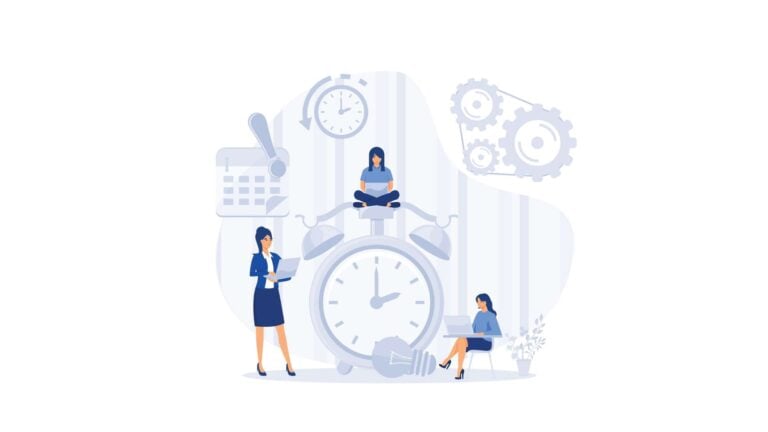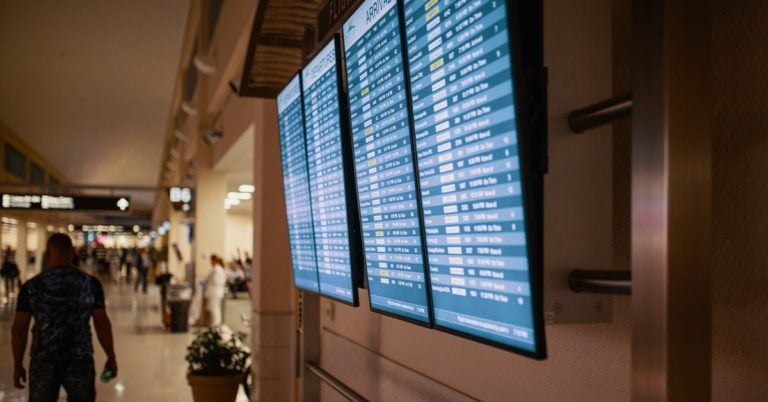Clopening shifts are when an employee closes a business for the night and then has an opening shift the next day. They may sound like a typical practice, but they can negatively affect your employees and your business. Below, we explain why clopening happens and how you can avoid it.
Creating employee schedules is a complicated dance of working with their availability, accounting for time off, monitoring the number of hours worked, and avoiding scheduling complications. Among these difficulties, “clopening” can arise.
Clopening is when an employee closes the business during the night shift and then opens the next morning. It might not sound like a big deal, but it can harm your employees and your business. It can affect workers’ mental health and morale, ultimately leading to decreased productivity and increased turnover.
Clopening may seem unavoidable when you’re short-staffed or when you have only a few employees who know how to open and close. However, there are ways to minimize clopening shifts and make scheduling employees easier. In this guide, we cover why clopening happens and what you can do to avoid it.
Key Takeaways
- A clopening shift is when an employee closes and then opens the business the next day, with little time between shifts.
- Clopening shifts can negatively impact employees since they aren’t getting enough downtime and sleep. These shifts can also lead to decreased productivity, increased risk of burnout, higher turnover rates, and more.
- Clopening often happens in retail, hospitality, and service industries and can be caused by inexperienced managers, understaffing, and improper employee training.
- Because of the negative impact of clopening shifts, some cities and states are working to pass more restrictive scheduling laws.
- Business owners should take proactive steps to minimize clopening shifts to improve their employee’s work-life balance and ensure their companies remain successful.
What Is Clopening?
Clopening combines the words “closing” and “opening.” It refers to when an employee works an opening shift immediately following a closing shift the night before. Employees who “clopen” typically have little time to return home and sleep between their shifts—sometimes only a few hours.
Consider this example of a clopening shift. An employee at a restaurant clocks out of the evening shift at 2 am. Then, they must return to work to open the restaurant for lunch at 10 am, an hour before opening to the public.
A late shift at a restaurant is enough to wear anyone out. On top of it, this employee doesn’t get enough time to rest and decompress before going back to work another busy restaurant shift.
Industries Where Clopening Is Common
Clopening can happen at any business that’s either open 24 hours a day or closed only briefly overnight before opening up again.
Some places where clopening is common include:
- Retail stores
- Hotels, motels, and other hospitality businesses
- Gas stations
- Convenience stores
- Food services businesses, like bars and restaurants
- Hospitals and other healthcare facilities
📚 This Might Interest You:
Swing shifts are also common in these types of businesses. Learn more about them in our in-depth guide to swing shifts.
Effects of Clopening on Employees and Businesses
Sleep deprivation, decreased productivity, increased absences, and poor customer service
The first—and maybe most obvious—negative effect of clopening is lack of sleep for employees who get limited hours between shifts.
Sleep deprivation is a serious matter, as it can lead to problems like mood changes, a weakened immune system, poor memory, and more.
These negative side effects of sleep deprivation ultimately impact your business as well. Think about how you feel after a night of poor sleep. Employees who consistently clopen may be less productive, make more mistakes, and miss more shifts.
There’s also a chance that customer-facing employees who are running on fumes will provide poor customer service. This can damage your reputation and even cause you to lose customers.
Burnout and higher employee turnover
Clopening can also cause employees to experience burnout. Workers who are frequently fatigued and don’t get proper downtime between shifts are more likely to become disengaged and overwhelmed. They’re likely to experience increased stress levels and may even begin to struggle with their mental health.
These employees who are burnt-out, stressed, and don’t have adequate time to recharge and enjoy life outside of work are more likely to quit. In other words, regularly scheduling clopening shifts can lead to increased turnover.
🧠 Did You Know?
You can use Connecteam’s turnover calculator to calculate the real cost of turnover at your business.
Clopening Laws: Is Clopening Legal?
Currently, clopening isn’t technically illegal. However, some US cities and states are passing labor laws to protect workers from unfair scheduling practices.
Some of these policies are more restrictive than others—like Oregon’s first-of-its-kind predictive scheduling law, which requires employers to give employees at least 10 hours off between shifts (unless approved by the worker). Employers who schedule workers for clopening shifts must pay them an overtime rate.
It’s vital to speak to an attorney or seek legal advice to ensure you follow relevant laws and regulations regarding clopening in your state.
📚 This Might Interest You:
We break down everything you need to know about predictive scheduling laws in 2025.
What Leads to Clopening?
Clopening isn’t always intentional, and there are many reasons why it’s common in certain businesses. Let’s go over why clopening happens.
Mistakes by managers
It’s understandable for a busy manager to occasionally assign an employee a closing and opening shift back to back without really thinking much about it. But clopening can happen more often when inexperienced managers make the schedule and aren’t aware of scheduling best practices.
Additionally, clopening can happen when multiple managers make the work schedule—with 1 scheduling day shifts and 1 scheduling night shifts, for instance—and don’t communicate with each other.
Not enough employees
Clopening is more likely to happen when a business is short-staffed. It can even be unavoidable when a manager doesn’t have a large team to choose from when assigning shifts. This is especially true when team members are out on paid time off or taking a sick day.
Not having enough employees trained to both open and close is also an issue. This puts extra pressure on team members who have been there longer or are more trusted with opening and closing responsibilities.
Cost-cutting efforts
Hiring new team members or training existing ones may help with clopening issues—but many businesses can’t always afford to do this. Often, clopening is common at companies trying to cut costs associated with hiring, onboarding, and training.
It can also be common at businesses that have recently cut staff members due to budget issues.
💡 Pro Tip:
Consider reducing costs in other areas, like buying refurbished equipment or saving on electricity, so you don’t have to sacrifice your hiring and training budget.
How to Avoid Clopening
Train all employees to open and close
Training all your team members to both open and close can make clopening shifts less of a necessity. If you don’t already, document your opening and closing processes and make them a required part of all new hire training.
You should also train existing employees on the process. Let them shadow team members who are typically responsible for opening and closing. Also, make opening and closing checklists so employees have all the necessary information and can complete the proper steps as they go.

🧠 Did You Know?
You can use Connecteam to create custom materials and courses to train your employees on any topic. Workers can complete training from their mobile devices at their own pace. Plus, you can create checklists for any process at your business and attach them to employees’ shifts.
Give employees advanced notice and more control
It’s a good practice to send out schedules several weeks in advance. This gives everyone time to address potential scheduling conflicts and helps employees plan for personal tasks and other responsibilities outside of work. When shifts are scheduled in advance, you and your team can also spot potential clopening scenarios more easily.
Similarly, offering employees more control over their schedules can help you avoid clopening. In most scheduling software, workers can request specific shifts or ask to swap shifts with their coworkers. This can ensure employees are satisfied with their schedules—and even prevent clopening from happening in the first place.
Ask employees for feedback
The best way to find out how your scheduling decisions affect your employees is to ask them. Send out surveys to ask your team about their scheduling preferences and gauge their overall satisfaction.
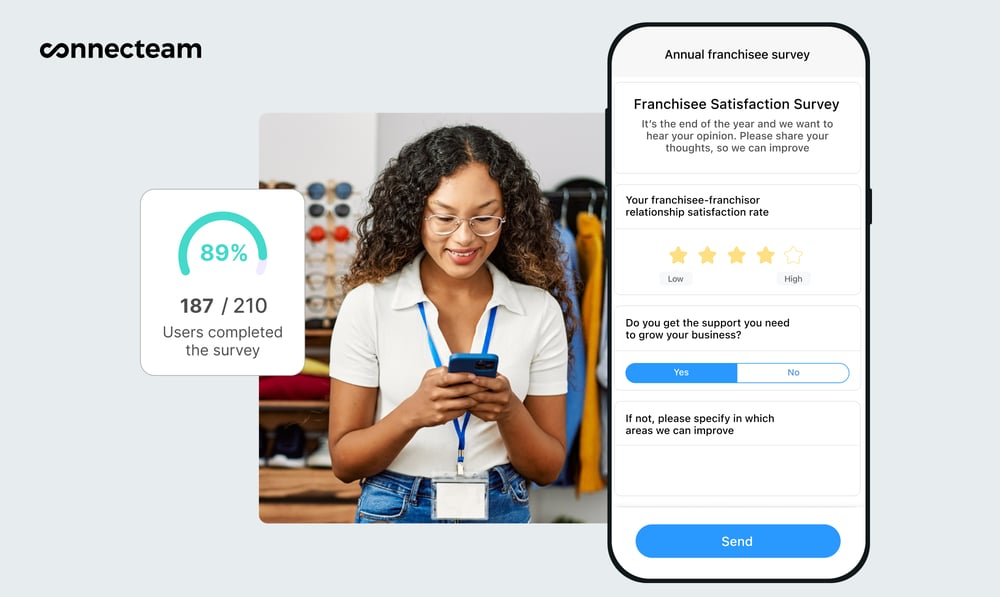
In your survey, ask employees what a balanced schedule looks like to them and what they currently like and don’t like about their schedules. For instance, you may find some employees who are fine working an occasional clopening shift in exchange for a few days off.
With this input from your team, you can make more informed scheduling decisions to reduce clopening or prevent it altogether.
💡Pro Tip:
Consider making surveys anonymous to encourage more honest feedback. Connecteam, for instance, lets you set any survey to collect anonymous responses.
Schedule and train more effectively with Connecteam
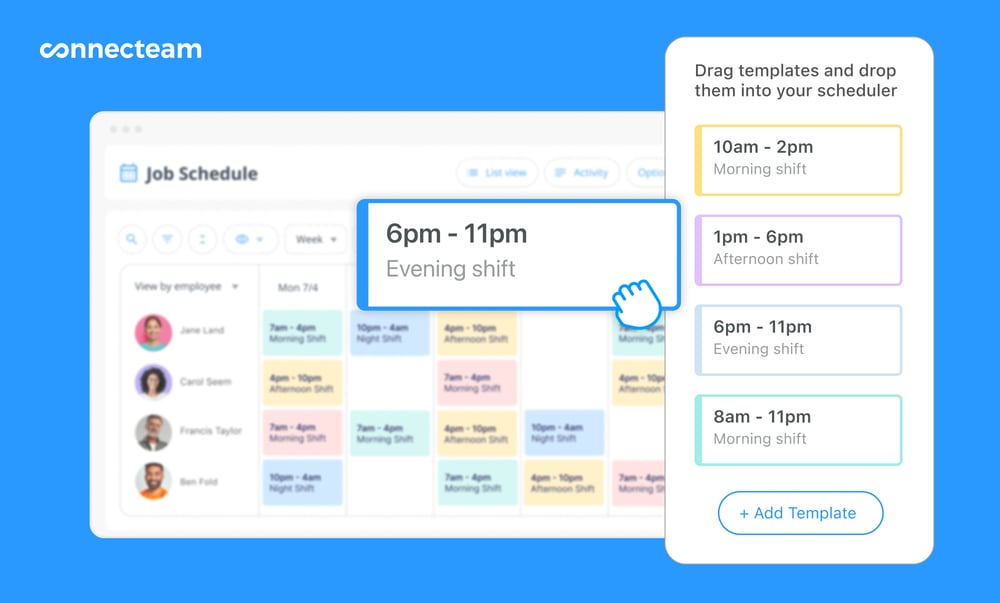
Scheduling shifts can be time-consuming and frustrating. You may find that you or other managers at your company sometimes make mistakes—including scheduling clopens—or frequently run into scheduling conflicts.
Using software like Connecteam can help streamline your entire scheduling process. Connecteam offers intuitive scheduling tools that allow you to create a schedule quickly, with oversight of the entire week and month.
You can build schedules from scratch with the drag-and-drop interface or use templates. Or, if you’ve already set up a schedule that avoids clopening shifts, you can import it to the app and set it to recur weekly or monthly.
Plus, you can set your own scheduling rules, and Connecteam will flag any scheduling errors and conflicts for you to address. Once you’ve published your schedule, Connecteam will notify employees immediately. From there, workers can request changes and swap shifts with or without your approval.
In addition, you can use Connecteam’s employee training app to train your team on opening and closing your business correctly. Upload existing materials and courses, or build new ones right within the app. Employees can complete courses and review materials at their convenience, and you can check their training progress in real time from the central dashboard.
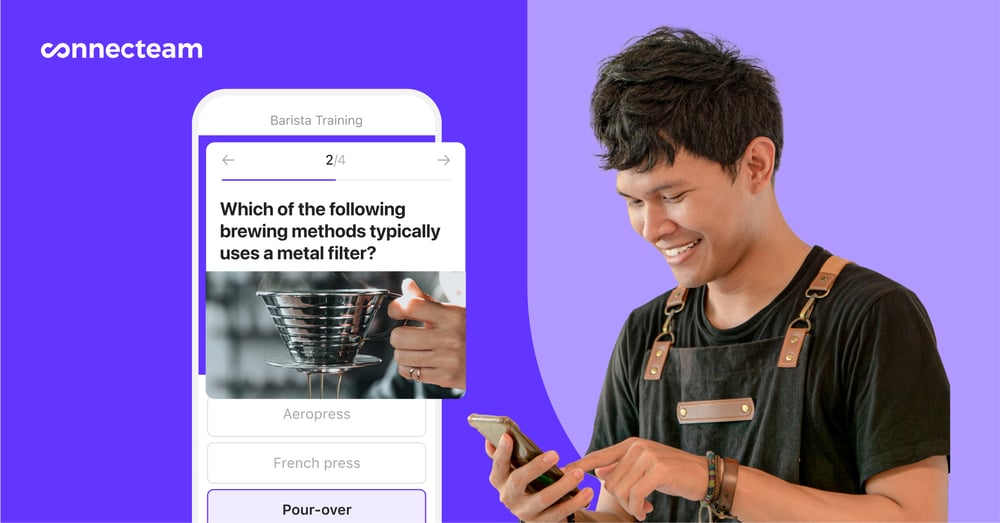
Conclusion
Clopening shifts are common in businesses that are open late or 24/7. But, the need to have the same employee close and open back to back can happen at any company for various reasons, like being short-staffed.
Though they may sometimes be unavoidable, clopening shifts can seriously harm the employees working them. They contribute to lack of sleep, poor work-life balance, and burnout. Many states and cities are trying to restrict scheduling practices like clopening because of these impacts on hourly employees.
Clopening can also hurt your business. Tired, burnout employees may result in less productivity, poor customer experience, and turnover at your business. Because of this, it’s vital to avoid clopening when possible. Some of the best ways to do this are training your current and new employees, giving your team more control over their schedule, and using work management software like Connecteam to make scheduling easier.
FAQs
How do you deal with clopening?
Clopening is sometimes unavoidable. In these cases, providing employees with advance notice of their shifts can help them prepare and request changes to the schedule ahead of time if needed. You can prevent clopening from happening regularly by expanding your team, training all employees how to open and close, and using scheduling software to help you avoid scheduling conflicts.
What does a 24/7 shift mean?
A 24/7 shift is when a business is open 24 hours per day, 7 days per week, and needs staff scheduled every hour. Typically, multiple employees will cover a 24/7 shift. Each worker will take a chunk of each day—sometimes with an employee working more than 1 shift in a 24-hour period.

